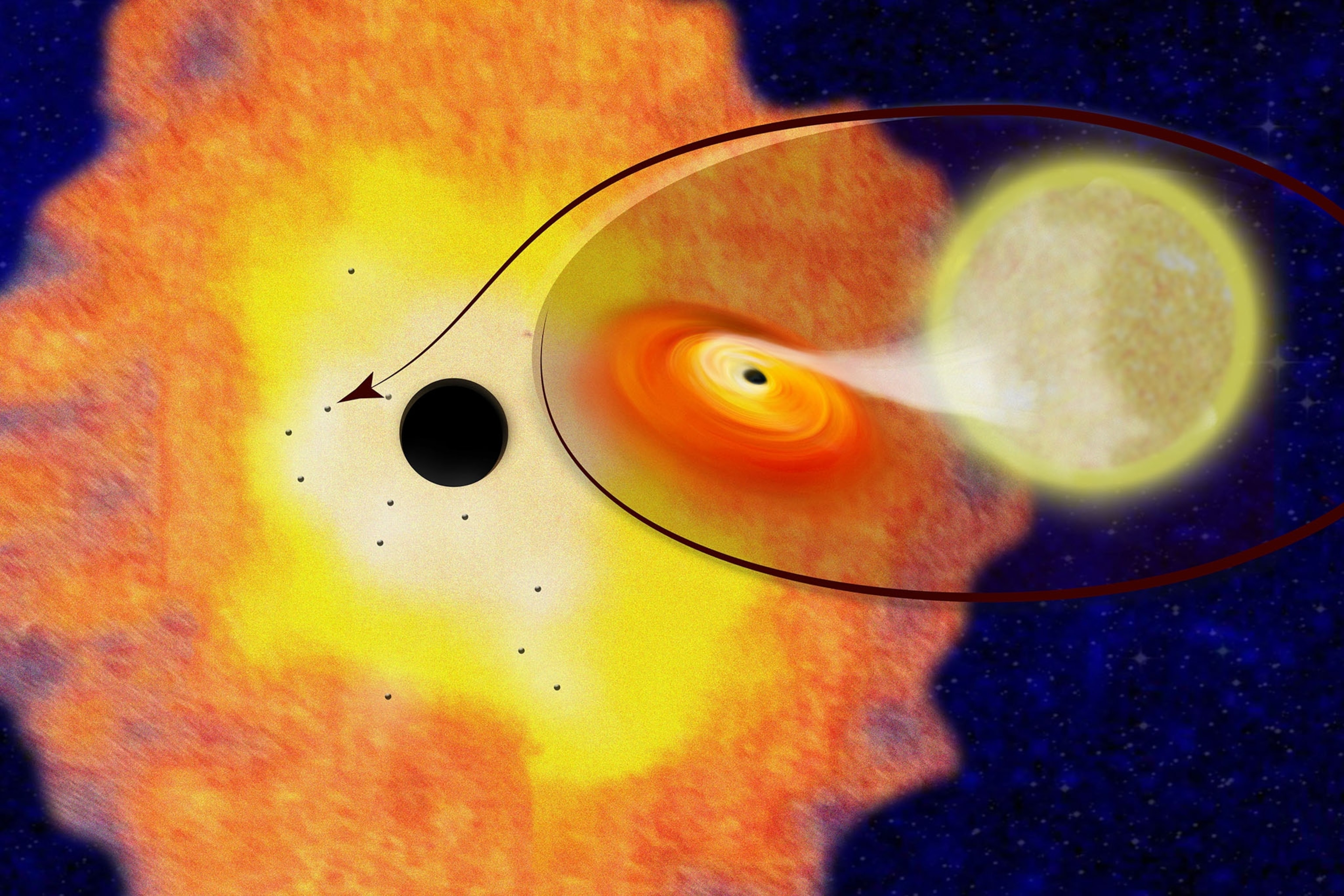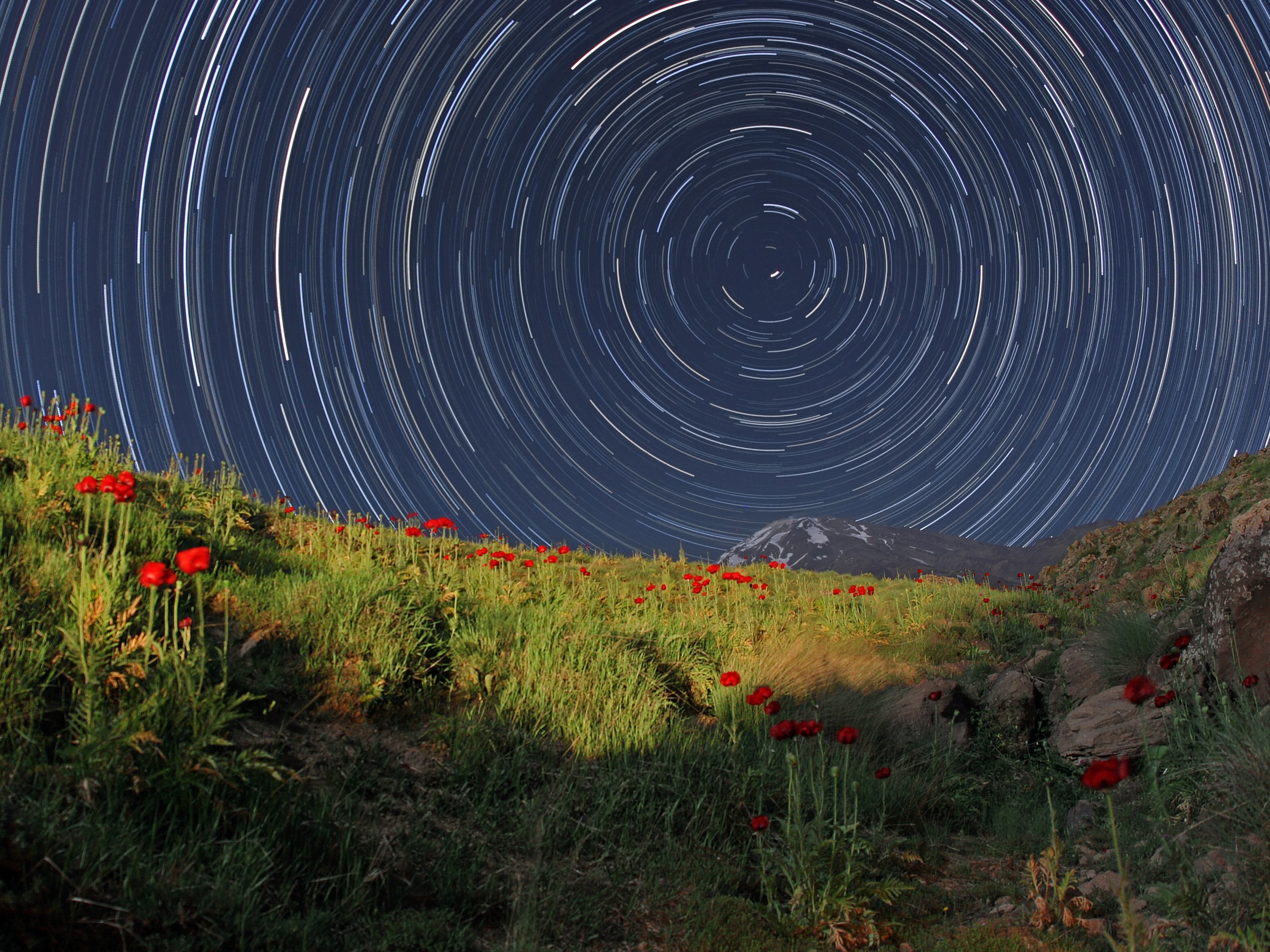
Thousands of Black Holes May Lurk at the Galaxy's Center
The discovery could help scientists better understand the space-time ripples called gravitational waves.
A gaggle of black holes has been found clustered around the center of our home galaxy, the Milky Way—and the discovery hints at a much larger population of black holes hidden across the galaxy. The discover offers a new test bed for understanding the ripples in space-time known as gravitational waves.
For years, scientists have known that a monster black hole sits in the middle of the galaxy. Called Sagittarius A* (Sgr A*), the compact object is more than four million times as massive as our sun, but it's packed into a region of space no bigger than the distance between Earth and our star.
Scientists had long suspected that as many as 20,000 smaller black holes were orbiting the galactic center. But as the name suggests, black holes are not easy to see directly. (Find out how astronomers are trying to take the first picture of a black hole.)
To overcome this obstacle, a team of astronomers went looking for stellar binaries—specifically ones with black holes that are paired closely with stars. In these cases, matter from the star falls into its ultradense partner, and the swirling gas forms what's known as an accretion disk around the black hole's maw. This superheated disk of gas emits x-rays that astronomers can detect.
“They're just the tip of the iceberg,” says Chuck Hailey, an astrophysicist at the Columbia Astrophysics Lab and lead author of the study, published today in the journal Nature. “But the only way we could find these black holes is to look for these tracers.”
Thousands More?
The team then went looking for black hole binaries that are within about three light-years of Sgr A* and that are moving in ways that suggest they are falling into their supermassive cousin.
“Over a long period of time, you'd expect these black holes to rain down onto the supermassive black hole, where they get caught into orbit,” Hailey says.
Astronomers expect more black holes will be clustered around the massive galactic center than the number spread across the galaxy. So based on the new finds, the study authors think that as many as 500 black hole binaries exist in the Milky Way, and that the galaxy hosts up to ten thousand black holes in total.
They came to this conclusion by reasoning that the black holes with visible accretion disks are only a sampling of those that must exist.
“Imagine you were standing in a football field, and you had a whole pile of 100-watt lightbulbs and 10-watt lightbulbs,” Hailey says. Now, spread those bulbs out a mile away. “You could still see the 100-watt ones, but you might not see the 10-watt ones. By knowing what the ratio was in the football field, you could figure out how many dim ones you missed at a mile away.”
This conclusion relies on a theory that one out of every 20 black holes will latch on to a star. But Hailey says that even if the theory is not entirely accurate, it's likely the galaxy hosts many more black holes than the 60 or so we've seen so far.
“Let's suppose the theory is wrong, even by a factor of two or three,” he says. “We'll take it. If there's even a thousand of them there, that's spectacular, compared to not having found any.”
What Can Black Holes Teach Us?
The center of the Milky Way is the nearest supermassive black hole that scientists have to study, and the best laboratory for testing how objects crowded in space interact.
Hailey notes that the find also has implications for scientists studying gravitational waves, the ripples in space-time created by powerful cosmic events, like when massive objects collide. Knowing how many black holes are out there can help scientists studying gravitational waves predict which waves can be attributed to black holes and how they form.
Everything astrophysicists need, he says, is at the center of the galaxy.







